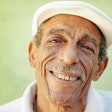
In the vast majority of states, hygienists cannot legally diagnose dental disease. Even in the few states that are the exception, diagnosis is limited to the scope of care delivered by hygienists and the state's laws.
 Estela Vargas.
Estela Vargas.While dental hygienists know how to recognize periodontal disease and treat it, they need the dentist's diagnosis and prescription. Therefore, a unified collaborative relationship with the dentist allows hygienists' roles to be imperative and for patients to understand the teamwork involved in their care.
Dental hygienists play an essential role in patient communication and acceptance of treatment. In some states, a dental hygienist can plan treatment but still needs the dentist's diagnosis and prescription.
Hygienists also require the patient's permission to treat them. Informed consent must be a standard protocol for any treatment in dental practice.
Can a dental hygienist be sued?
Dental hygienists may be viewed as having lighter responsibilities in the eyes of the law than dentists, but they are still subject to litigation. There are many reasons why dental hygienists are sued.
A dental hygienist makes what is referred to as "a dental hygienist diagnosis." It is recorded in a patient's chart and then relayed to the dentist, who can discuss it with the patient. Discussing the case together and as a team of three -- hygienist, dentist, and patient -- is essential to confirming the treatment plan.
In this article, we will examine the following reasons related to coding and recordkeeping wherein the dental hygienist is accountable:
- Failure to properly document
- Failure to conduct a periodontal probe and take the necessary radiographs (prescribed by the dentist) and document any concerns
- Failure to update the patient's medical history, including medications, allergies, and physician diagnoses (such as diabetes and heart disease)
- Failure to recognize a medically compromised patient
- Failure to correctly code for procedures rendered
- Failure to identify periodontal diseases and oral pathology (such as a potentially malignant lesion)
The dental hygiene diagnosis
Dental malpractice refers to an injury resulting from negligent dental care, failure to diagnose or treat a potentially dangerous condition, failure to diagnose or treat oral disease promptly, or any form of intentional misconduct by the dentist.
The American Dental Hygienists' Association (ADHA) defines dental hygiene diagnosis as: "The identification of an individual's health behaviors, attitudes, and oral healthcare needs for which a dental hygienist is educationally qualified and licensed to provide ... The dental hygiene diagnosis provides the basis for the dental hygiene plan."
Per the ADHA, this diagnosis requires the following two conditions to be met:
- Evidence-based critical analysis
- Interpretation to reach conclusions about the patient's dental hygiene treatment needs
When a dental hygienist fails to document a patient's medical history properly, it can affect their treatment or outcome. Suppose the hygienist does not perform periodontal charting and take the necessary radiographs in the presence of disease. In such cases, it affects the care patients receive, the supporting documentation of the care provided, and whether the dental insurance claim is paid.
For instance, if a patient is diagnosed with periodontal disease and the dentist determines that the patient needs four quadrants of scaling and root planing, the insurance plan will not pay the claim without supporting documentation such as periodontal charting, bleeding points, and necessary radiographs demonstrating bone loss in each quadrant. If the hygienist failed to secure the periodontal charting and the radiographs, the claim will be denied.
Common coding errors on hygiene claims
The rule of coding is to code what you do. The law behind the rule is that you must support what you do with proper clinical proof of medical necessity.
When choosing codes that best describe the treatment rendered, it is essential to know what documentation the insurance administrator needs to adjudicate the claim. Dentists -- and sometimes hygienists -- can be held legally responsible for fraudulent coding activity.
Common coding errors are upcoding, downcoding, unbundling, and billing for services not rendered. Below is a brief explanation of these errors:
- Upcoding is when a patient is charged for a more expensive procedure than the one that was performed.
- Downcoding is when a less complex procedure is reported on a claim so the provider can receive reimbursement when the actual procedure that was performed is not a covered benefit on an insurance plan.
- Unbundling codes is purposely separating procedures that are inclusive and billing them as separate line items on a dental claim.
- Billing for services that are not rendered usually occurs when the computer appointment is posted as complete without the hygienist double-checking that all procedures were performed and by whom. For instance, a patient is scheduled for a prophy, evaluation, and four bitewings but declines the bitewings and is still charged for radiographs by mistake at the front desk.
Upcoding to a periodontal maintenance procedure when the procedure was actually gingival inflammation or prophy is a common coding error. The hygienist must know what constitutes a prophy (D1110) and gingival inflammation without bone loss (D4346), as well as what is necessary to bill out a periodontal maintenance procedure (D4910). Typically, D4910 is paid at a higher rate than the prophy but is specific to detailed clinical and contractual documentation.
Reporting scaling (D4341) and root planing (D4342) when there is no evidence of bone loss may be considered upcoding and viewed as fraudulent billing. Treatment planning is based on clinical need, not what an insurance plan will pay.
Another issue that is helpful to note, there is no immediate and universal mandate to include the ICD-10-CM (International Classification of Diseases, Tenth Revision, Clinical Modification) code on all dental claims. However, claims billed to a medical policy or a combination plan that requires medical to be billed first will need these codes included with the claim. Learning the basics of using ICD-10 codes in dental claims is vital.
Dental coding mirrors new technologies, materials, and treatment modalities. The entire dental team needs to be educated every year about changes to the codes and how these changes affect the practice of dentistry and proper recordkeeping.
Estela Vargas, CRDH, is the founder and CEO of Remote Sourcing, a dental insurance billing and revenue recovery service. She is a graduate of Miami Dade College's dental hygiene program. Vargas' extensive background in the clinical arena of dentistry is coupled with her experience as a practice administrator and business executive.
The comments and observations expressed herein do not necessarily reflect the opinions of DrBicuspid.com, nor should they be construed as an endorsement or admonishment of any particular idea, vendor, or organization.



















